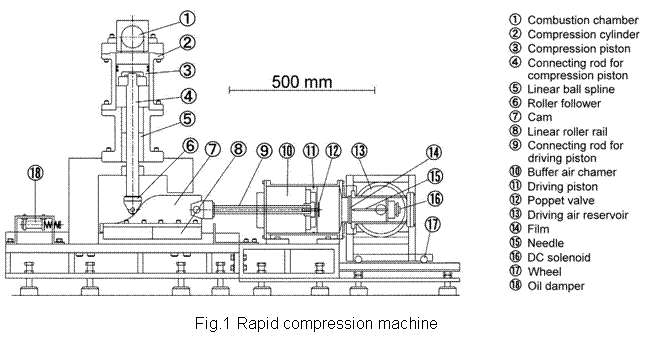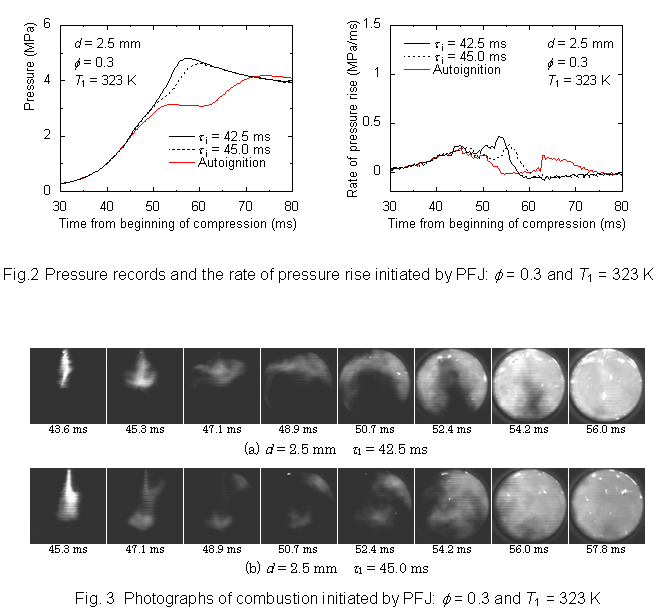|
|
|
| Ignition Timing Control of Homogeneous Charge Compression Ignition (HCCI) Combustion by Pulsed Flame Jet (PFJ) |
Homogeneous Charge Compression Ignition (HCCI) engines with lean fuel/air mixtures have a number of advantages over conventional spark ignition (SI) engines and
compression ignition (CI) engines. In conventional SI engines, the use of lean mixtures reduces NOx formation with high thermal efficiency, however, the mixtures beyond the lean flammability limit cannot be utilized. As the combustion nature of HCCI is based on the autoignition process, the mixtures beyond the lean flammability limit can be utilized. Consequently, very low NOx emissions with high thermal efficiency may be attained. In addition, owing to the un-throttled operation and the use of high compression ratios as compared to the conventional SI engines due to its autoignition nature, HCCI engines can obtain higher thermal efficiency than the conventional SI engines. In conventional CI engines, on the other hand, most of the fuel is burned in a diffusion combustion phase, which inherently leads to the formation of excessive amount of soot and NOx emissions. In HCCI engines, however, NOx and soot emissions may decrease drastically
since homogeneous lean mixtures are employed. The problems encountered with HCCI combustion are difficulty in controlling the start of combustion, high rate of heat release, high HC and CO emissions, and low power density. Among them, the ignition timing control is the most important and difficult subject. In this study, an attempt of direct ignition timing control of HCCI combustion by Pulsed Flame Jet (PFJ) was made.
A compact rapid compression machine (RCM) as presented in Fig. 1 was used to create a high pressures and high temperatures environment. As shown in Fig. 2, the onset of large pressure rise, namely the start of combustion in the combustion chamber was observed corresponding to the each ignition timing of the PFJ igniter. According to the obtained high-speed video images shown in Fig. 3, the jet began to issue from the orifice within one millisecond from the beginning of the spark discharge in the cavity. The intensity of the jet image once became weak, and then the combustion occurred across a wide area in the combustion chamber, which was similar to the autoignition cases. On the other hand, when PFJ was applied in the mixtures within the lean flammability limit, the flame propagated continuously from the jet issuing from the orifice. From this point of view, it was obvious that the jet issuing from the PFJ igniter behaved as a trigger for the autoignition of the fuel in the combustion chamber.
|

|

|
|
|
|
|
|